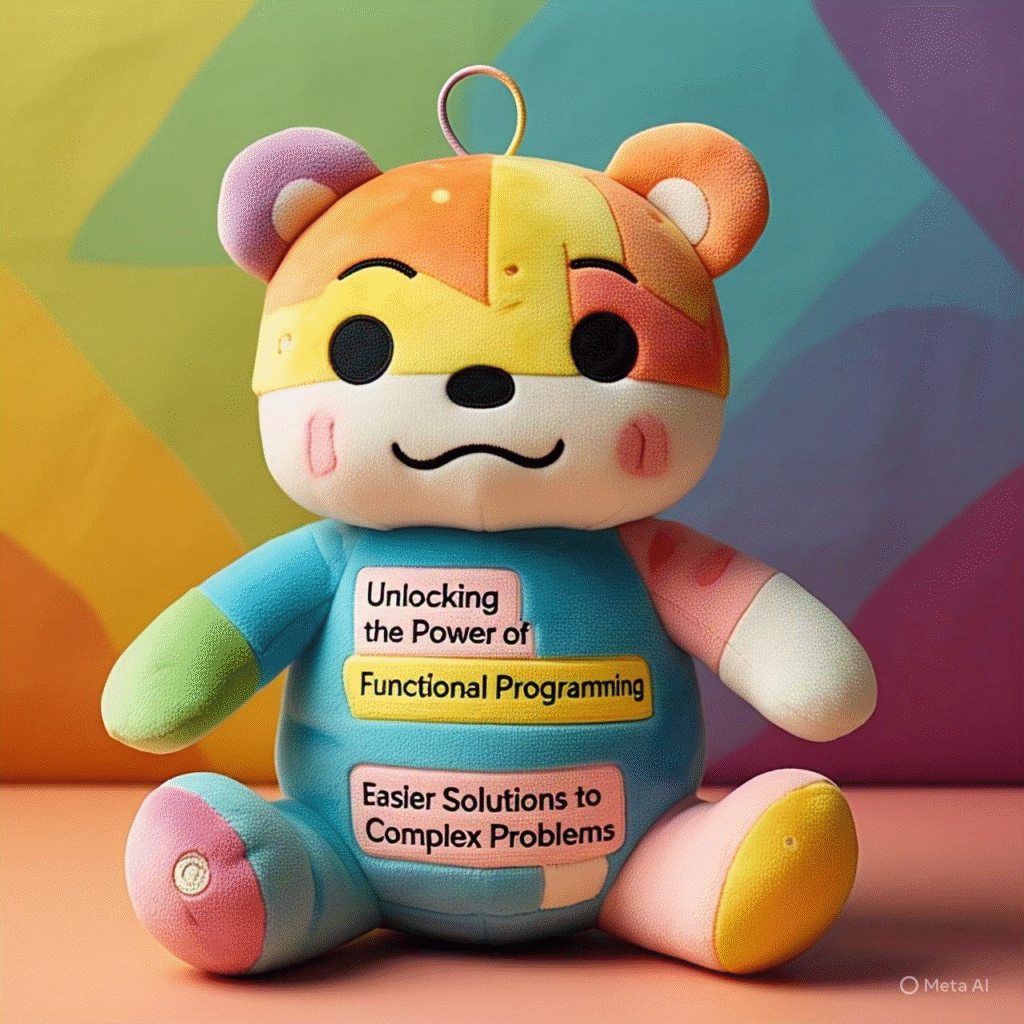
Functional programming is a paradigm that has gained significant attention in recent years due to its potential to simplify complex problems, improve code quality, and enhance development efficiency. While it can be challenging to switch from an imperative mindset, functional programming offers several benefits that make it an attractive choice for modern software development. In this article, we will explore the advantages of functional programming, discuss problems that are easier to solve with this paradigm, and provide examples to illustrate its effectiveness.
The Basics of Functional Programming
Functional programming is a programming paradigm that emphasizes the use of pure functions, immutability, and the avoidance of changing state. Pure functions are functions that always return the same output given the same inputs, without producing any side effects. Immutability refers to the idea that data should not be changed once it is created. By following these principles, functional programming promotes a declarative programming style, where the focus is on specifying what the program should accomplish, rather than how it should accomplish it.
One of the primary benefits of functional programming is its ability to simplify complex problems. By breaking down a problem into smaller, more manageable pieces, functional programming makes it easier to understand and solve complex tasks. Additionally, functional programming promotes code reusability, as pure functions can be composed together to create more complex functions.
Problems that are Easier to Solve with Functional Programming
While functional programming can be applied to a wide range of problems, there are certain types of problems that are particularly well-suited to this paradigm. Some of these problems include:
1. Data Processing Pipelines
Data processing pipelines are a common problem in software development, where large datasets need to be processed and transformed into a usable format. Functional programming makes it easy to compose data processing pipelines using higher-order functions like map, filter, and reduce. This allows for a declarative and concise way to express complex data transformations.
For example, consider a dataset of numbers that need to be doubled, filtered to remove odd numbers, and then summed. In an imperative programming language, this would involve writing a loop to iterate over the data, doubling each number, checking if the number is even, and then adding it to a running total. In contrast, a functional programming language would allow you to express this transformation in a concise and declarative way, using a combination of map, filter, and reduce functions.
from functools import reduce
# Sample dataset
numbers = [1, 2, 3, 4, 5]
# Double the numbers, filter out odd numbers, and sum the result
result = reduce(lambda x, y: x + y,
filter(lambda x: x % 2 == 0,
map(lambda x: x * 2, numbers)))
print(result) # Output: 30
2. Recursive Data Structures
Recursive data structures, such as trees and graphs, are another area where functional programming excels. Functional programming encourages the use of recursion, which is a natural fit for traversing recursive data structures. Additionally, functional programming promotes immutability, making it easier to reason about the state of the data structure.
For example, consider a tree data structure where each node has a value and two children. In a functional programming language, you can define a recursive function to traverse the tree and calculate the sum of all node values.
-- Sample tree data structure
data Tree = Leaf Int | Node Tree Tree
-- Calculate the sum of all leaf values in the tree
sumLeaves :: Tree -> Int
sumLeaves (Leaf x) = x
sumLeaves (Node left right) = sumLeaves left + sumLeaves right
-- Example usage
tree = Node (Leaf 1) (Node (Leaf 2) (Leaf 3))
result = sumLeaves tree
print result -- Output: 6
3. Concurrent or Parallel Computations
Concurrent or parallel computations are becoming increasingly important in modern software development, as multi-core processors become more prevalent. Functional programming’s emphasis on immutability and pure functions makes it easier to parallelize computations without worrying about shared state or side effects.
For example, consider a computation that involves performing some expensive operation on a large dataset. In a functional programming language, you can use a library like scala.concurrent to parallelize the computation using futures.
import scala.concurrent.{Await, Future}
import scala.concurrent.duration._
import scala.concurrent.ExecutionContext.Implicits.global
// Sample computation
def compute(x: Int): Int = {
// Simulate some work
Thread.sleep(1000)
x * x
}
// Parallelize the computation using Futures
val futures = (1 to 5).map(x => Future(compute(x)))
// Wait for the results
val results = Await.result(Future.sequence(futures), 5.seconds)
println(results) // Output: Vector(1, 4, 9, 16, 25)
4. Memoization and Caching
Memoization and caching are techniques used to optimize expensive function calls by storing their results in a cache. Functional programming’s use of pure functions makes it easy to implement memoization, as the output depends only on the input arguments.
For example, consider a function that performs some expensive computation based on its input arguments. In a functional programming language, you can use a memoization library to cache the results of the function, so that subsequent calls with the same input arguments can return the cached result.
// Memoize a function using a cache object
function memoize(fn) {
const cache = {};
return function(...args) {
const key = JSON.stringify(args);
if (key in cache) {
return cache[key];
}
const result = fn(...args);
cache[key] = result;
return result;
};
}
// Example usage
const expensiveComputation = memoize((x, y) => {
// Simulate some work
console.log("Computing...");
return x + y;
});
console.log(expensiveComputation(2, 3)); // Computing... 5
console.log(expensiveComputation(2, 3)); // 5 (cached result)
Best Practices for Functional Programming
While functional programming offers many benefits, it can be challenging to adopt this paradigm, especially for developers who are accustomed to imperative programming. Here are some best practices to help you get started with functional programming:
- Start with small, pure functions: Begin by writing small, pure functions that perform a specific task. This will help you develop a functional programming mindset and make it easier to compose more complex functions.
- Use higher-order functions: Higher-order functions, such as
map,filter, andreduce, are a fundamental part of functional programming. Practice using these functions to simplify your code and make it more declarative. - Avoid mutable state: Immutability is a key principle of functional programming. Avoid using mutable state, and instead, focus on creating new data structures and objects whenever the state needs to be updated.
- Use recursion judiciously: Recursion is a powerful technique in functional programming, but it can be challenging to manage. Use recursion judiciously, and consider using techniques like tail recursion to optimize performance.
- Take advantage of functional programming libraries: Many programming languages have libraries and frameworks that support functional programming. Take advantage of these libraries to simplify your code and make it more efficient.
Conclusion
Functional programming is a powerful paradigm that can simplify complex problems, improve code quality, and enhance development efficiency. By understanding the principles of functional programming and applying best practices, developers can write more concise, maintainable, and efficient code. Whether you’re working on data processing pipelines, recursive data structures, or concurrent computations, functional programming has something to offer. So, take the first step today, and discover the benefits of functional programming for yourself.
In conclusion, functional programming is not just a programming paradigm, it’s a way of thinking. It’s a way of breaking down complex problems into smaller, more manageable pieces, and solving them in a declarative and concise way. By adopting functional programming, developers can write more efficient, scalable, and maintainable code, and take their software development skills to the next level.
Future of Functional Programming
The future of functional programming is bright. As software development continues to evolve, the need for more efficient, scalable, and maintainable code will only continue to grow. Functional programming is well-positioned to meet this need, and its popularity is expected to continue to grow in the coming years.
Some of the trends that are driving the adoption of functional programming include:
- Big Data: The increasing amount of data being generated and processed is driving the need for more efficient and scalable data processing pipelines. Functional programming is well-suited to this task, and its use is becoming more widespread in big data processing.
- Cloud Computing: Cloud computing is becoming increasingly popular, and functional programming is well-suited to this environment. The scalability and concurrency provided by functional programming make it an attractive choice for cloud-based applications.
- Artificial Intelligence and Machine Learning: Artificial intelligence and machine learning are becoming increasingly important in software development, and functional programming is playing a key role in these areas. The declarative and concise nature of functional programming makes it well-suited to the complex data processing and analysis required in these fields.
In summary, functional programming is a powerful paradigm that can simplify complex problems, improve code quality, and enhance development efficiency. Its adoption is expected to continue to grow in the coming years, driven by trends such as big data, cloud computing, and artificial intelligence and machine learning. By understanding the principles of functional programming and applying best practices, developers can write more concise, maintainable, and efficient code, and take their software development skills to the next level.

Игры на смартфон в последнее время становятся всё более популярными. Каждый день появляются новые проекты, которые впечатляют пользователей со всего мира. В этой статье мы расскажем о новейших новостях из мира мобильных игр и новостных сводках игровой индустрии.
Недавно компания Google объявила свежую версию Android, которая принесла множество обновлений для пользователей. В частности, теперь возможны новейшие графические параметры, что превращает геймплей ещё более плавным.
Одной из самых долгожданных игр 2024 года является перезапуск Genshin Impact. Создатели подготовили огромное количество персонажей, а также улучшили визуальные эффекты и включили новые функции.
Интересным событием стало анонс проекта от компании Tencent. Титул разработки пока не разглашается, но источники говорят, что это будет захватывающий RPG с онлайн-режимом.
Для любителей мобильных RPG есть прекрасная новость – в этом месяце выйдет долгожданное обновление для State of Survival. В новой версии разработчики добавили новые юниты, а также внедрили новые режимы.
Сфера мобильных игр не стоит на месте, и каждую неделю нас радуют свежие разработки. Следите за нашими обзорами, чтобы не пропустить о самых интересных играх и событиях.
Кроме того, не забудьте подписаться на наш канал нашими новостями в https://www.pinterest.com/pin/118782508915605442/, чтобы видеть интересные новости из мира гейминга.
На сегодня это все новости из мира игровой индустрии. До новых встреч и приятной игры!
https://www.footandmatch.com/2015/02/12/decorative-pumpkins-which-one/
http://F.r.A.G.Ra.nc.E.rnmn%40.r.os.p.E.r.les.c@pezedium.free.fr/?a%5B%5D=%3Ca+href%3Dhttps://Gameshalls.ru/%3E%D0%B2%D0%B7%D0%BB%D0%BE%D0%BC%D0%B0%D0%BD%D0%BD%D1%8B%D0%B5+%D0%B8%D0%B3%D1%80%D1%8B+%D0%B4%D0%BB%D1%8F+%D1%81%D0%BB%D0%B0%D0%B1%D1%8B%D1%85+%D1%82%D0%B5%D0%BB%D0%B5%D1%84%D0%BE%D0%BD%D0%BE%D0%B2%3C/a%3E%3Cmeta+http-equiv%3Drefresh+content%3D0;url%3Dhttps://gameshalls.ru/+/%3E
https://menwiki.men/wiki/User:PercyDemaio66
http://Https%3A%2F%25Evolv.ElUpc@haedongacademy.org/phpinfo.php?a%5B%5D=%3Ca+href%3Dhttps://gameshubs.ru/%3E%D1%81%D0%BA%D0%B0%D1%87%D0%B0%D1%82%D1%8C+%D0%BC%D0%BE%D0%B4%D0%B8%D1%84%D0%B8%D1%86%D0%B8%D1%80%D0%BE%D0%B2%D0%B0%D0%BD%D0%BD%D1%8B%D0%B5+%D0%B8%D0%B3%D1%80%D1%8B+%D0%BD%D0%B0+%D1%82%D0%B5%D0%BB%D0%B5%D1%84%D0%BE%D0%BD%3C/a%3E%3Cmeta+http-equiv%3Drefresh+content%3D0;url%3Dhttps://gameshubs.ru/+/%3E
http://a.l.r.u.scv.kd@zvanovec.net/phpinfo.php?a%5B%5D=%3Ca+href%3Dhttps://droids-mania.ru%3E%D0%B8%D0%B3%D1%80%D1%8B+%D1%81+%D0%B1%D0%B5%D1%81%D0%BA%D0%BE%D0%BD%D0%B5%D1%87%D0%BD%D1%8B%D0%BC%D0%B8+%D0%B4%D0%B5%D0%BD%D1%8C%D0%B3%D0%B0%D0%BC%D0%B8%3C/a%3E%3Cmeta+http-equiv%3Drefresh+content%3D0;url%3Dhttps://droids-mania.ru+/%3E
Невероятно! Эти игр
Сенсация! Эти сенсационные игровые новости потрясли игровое сообщество!
Потрясающие события! Эти новости о видеоиграх поразят вас!
aabe10e
Thanks for some other fantastic post. The place else could anybody get that type of information in such
a perfect method of writing? I have a presentation next week, and I am on the look for such info.